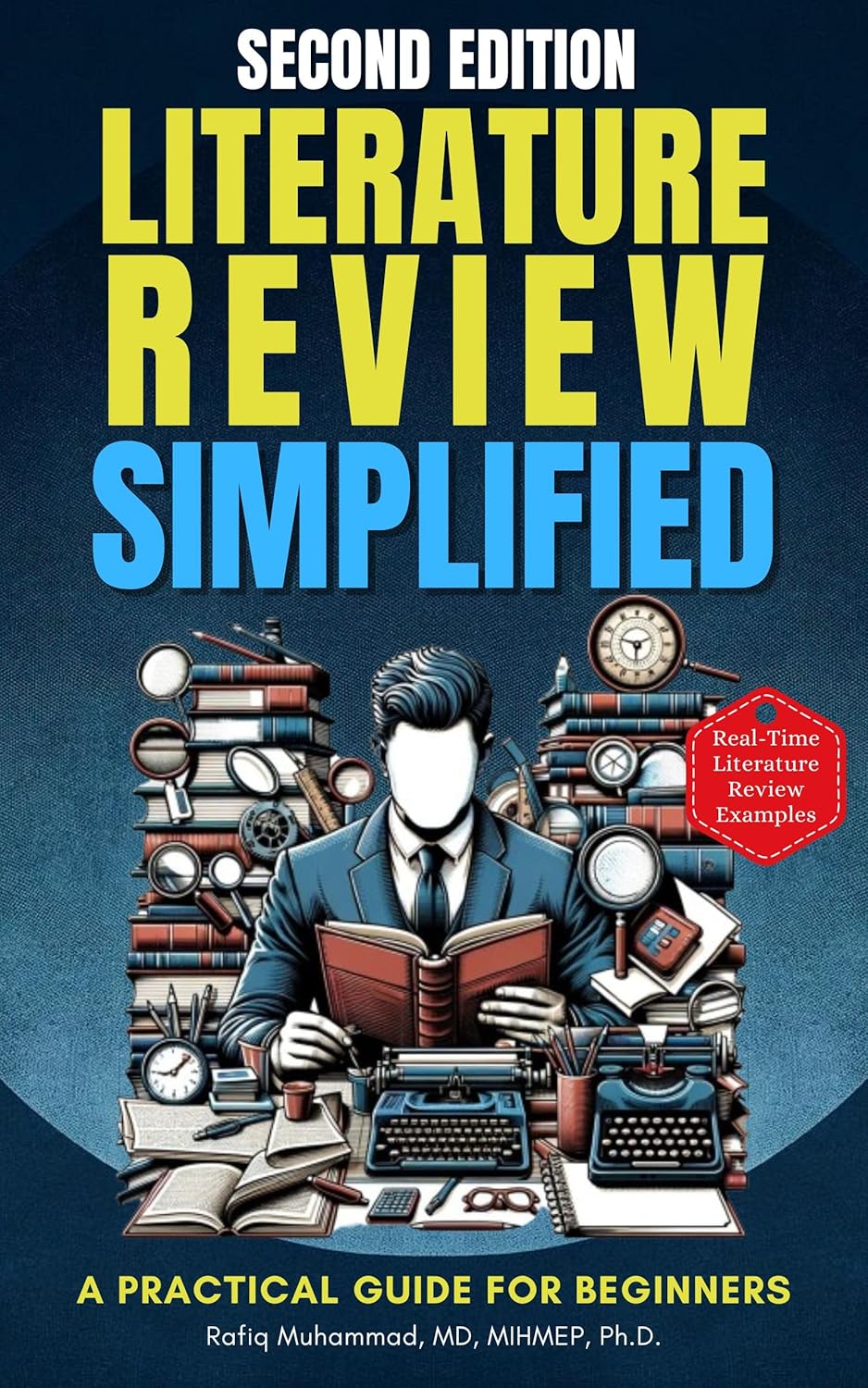Literature Review Simplified: A Practical Guide for Beginners — Second Edition
Literature Review Simplified: A Practical Guide for Beginners (Second Edition) introduces a refined 10-step Rapid-Synthesis System with new visuals and bonus chapters on mixed-methods reviews, AI-assisted literature review, and high-level meta-analysis techniques. You’ll move from question and search strategy development to evidence synthesis and polished write-up using practical templates and matrices.
Build a transparent workflow aligned to PRISMA guidelines, manage sources with citation management (Zotero), and incorporate grey literature search when needed. You’ll learn conceptual mapping, critical appraisal, and how to surface research gaps—then turn notes into defensible narrative synthesis, scoping reviews, or a plan for systematic review planning and meta-analysis.
- Rapid-Synthesis System: 10 steps from focused question → search → triage → synthesis → chapter.
- Search strategy development: keywords, Boolean strings, databases, and AI search hacks for speed.
- Evidence matrices: reusable tables for themes, methods, effects, and quality ratings.
- Reporting with PRISMA: flow diagram guidance, inclusion/exclusion logic, and transparency notes.
- Mixed-methods reviews: integrate qualitative and quantitative findings with clear linking logic.
- Meta-analysis primer: effect-size concepts, heterogeneity basics, and when to synthesize quantitatively.
- Zotero workflow: collections, tags, deduping, cite-while-you-write, and export tips.
- Research synthesis tools: matrices, concept maps, and checklists that accelerate drafting.
- Writing literature review chapters: structure, voice, and model paragraphs for each section.
Use the included evidence matrices and planners to convert reading into publishable arguments—so your chapter makes a clear case for the field’s state, the research gaps that matter, and why your study is the next logical step.
What’s inside
- Clear chapter-by-chapter roadmap
- Reusable templates and checklists
- Step-by-step examples from real projects
Who it’s for
- Graduate students (MA/MSc/PhD)
- Early-career researchers
- Supervisors seeking practical frameworks
What readers say
“Exactly what I needed to get unstuck.”
“Concise, rigorous, and practical.”
What you'll learn
- 10‑step rapid‑synthesis system with AI search hacks
- New visuals, tables, and examples throughout
- Bonus chapters: mixed methods, AI‑assisted reviews, meta‑analysis
Frequently asked questions
What’s new in the Second Edition?
An updated 10-step Rapid-Synthesis System, clearer chapter flow with tables/infographics, two fully worked sample reviews, and bonus chapters on mixed-methods, AI-assisted reviews, and meta-analysis.
Can I really finish a literature review in 4 weeks?
Yes—if you follow the weekly milestones: scope & questions → targeted search → triage & evaluation → thematic synthesis → structured drafting → polish and references.
How does the Rapid-Synthesis System reduce time?
It replaces open-ended reading with repeatable steps: build a search plan, triage quickly, map themes with concept maps/evidence matrices, then draft from your synthesis notes—not the PDFs.
Which AI search hacks are covered?
You’ll learn prompt patterns for quicker keyword discovery, related-paper expansion, and abstract screening. The book shows how to use these ethically with verification and disclosure.
Theme-based or chronological structure—what’s best?
Theme-first is recommended. Use chronology only when historical development matters. You’ll get templates for thematic sections, transitions, and writing up debates and gaps.
How many sources do I need?
Quality over quantity. Many programs expect 25–80+ peer-reviewed sources depending on topic and level. The book shows how to balance seminal works with recent studies and avoid padding.
Does it include templates I can reuse?
Yes—search logs, screening checklists, note/synthesis sheets, outline planners, and an evidence-matrix template to turn notes into defensible themes.
Will this help with mixed-methods topics?
Yes. The bonus chapter explains how to synthesize qualitative and quantitative strands, report convergences/divergences, and link to a mixed-methods design.
What if my supervisor expects a meta-analysis?
The book clarifies the difference between narrative/thematic reviews and meta-analysis, and explains when formal quantitative synthesis is appropriate and how to report effect-size evidence at a high level.
How do I avoid plagiarism while paraphrasing?
Use idea-level rephrasing, restructure claims, cite accurately, and track page numbers for direct quotes. You’ll get paraphrasing moves and citation patterns for APA/MLA/etc.
Common mistakes this book helps me avoid?
Summarizing instead of synthesizing, unclear scope, missing recent work, weak gap statement, and inconsistent referencing. Each has a checklist and quick fixes.
Is it suitable for my field?
Yes. Examples span social sciences, education, health, and STEM; the method is discipline-agnostic and focuses on rigorous, transparent synthesis.
